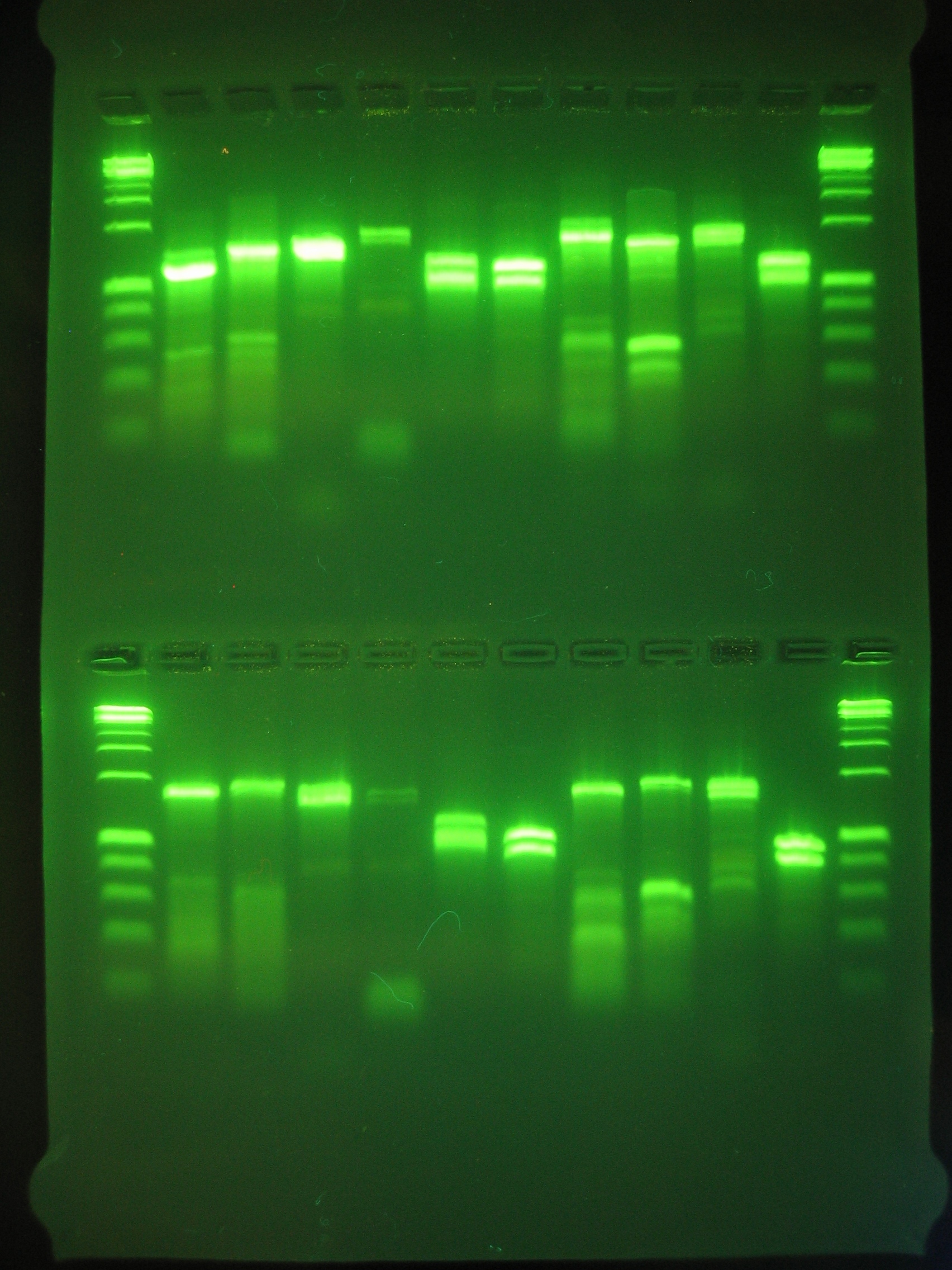Gel electrophoresis: Difference between revisions
Created page with "Moleceules can be seperated through many different methods. One of them is called gel electrophoresis. Gel electrophoresis is used for purification of proteins. In general, gel e..." |
No edit summary |
||
| (5 intermediate revisions by 4 users not shown) | |||
| Line 1: | Line 1: | ||
[[Image:Gel Electrophoresis.jpg|right|600x400px|Example of Gel Electrophoresis]] | |||
< | [[Molecule|Molecules]] can be separated by many different methods. One of them is gel electrophoresis. Gel electrophoresis is used for purification of [[Proteins|proteins]]. In general, gel electrophoresis is based on the movement of molecules, such as [[RNA|RNA]] and [[DNA|DNA]], under an electric field. The main idea of the separation is the movement of these molecules through small pores. The electric field created all over the gel enables the molecules to move from negative to the positive electrodes. DNA is negatively charged, therefore moves towards the positive electrode. Large molecules move slowy and can easily get attached to the pores, this prevents them moving from one side of the gel to the other. Whereas, small molecules move more rapidly and they can also move further than the big molecules do. Hence this mechanism allows the seperation of molecules due to their their size. Gel electrophoresis also allows the separation of molecules based on how coiled or linear they are. For example, supercoiled [[Plasmid|plasmids]] move more rapidly through the gel than linear plasmids <ref>Berg.J, Tymoczko J., and Stryer L., (2012) Biochemistry, Seventh Edition, New York: WH Freeman</ref><ref name="Image of Gel Electrophoresis">http://www.whoi.edu/cms/images/tgoepfert/2004/11/IMG_3426_3562.jpg</ref> . | ||
=== References === | |||
<references /> | |||
<br> | |||
Latest revision as of 21:02, 4 December 2016

Molecules can be separated by many different methods. One of them is gel electrophoresis. Gel electrophoresis is used for purification of proteins. In general, gel electrophoresis is based on the movement of molecules, such as RNA and DNA, under an electric field. The main idea of the separation is the movement of these molecules through small pores. The electric field created all over the gel enables the molecules to move from negative to the positive electrodes. DNA is negatively charged, therefore moves towards the positive electrode. Large molecules move slowy and can easily get attached to the pores, this prevents them moving from one side of the gel to the other. Whereas, small molecules move more rapidly and they can also move further than the big molecules do. Hence this mechanism allows the seperation of molecules due to their their size. Gel electrophoresis also allows the separation of molecules based on how coiled or linear they are. For example, supercoiled plasmids move more rapidly through the gel than linear plasmids [1][2] .
References
- ↑ Berg.J, Tymoczko J., and Stryer L., (2012) Biochemistry, Seventh Edition, New York: WH Freeman
- ↑ http://www.whoi.edu/cms/images/tgoepfert/2004/11/IMG_3426_3562.jpg